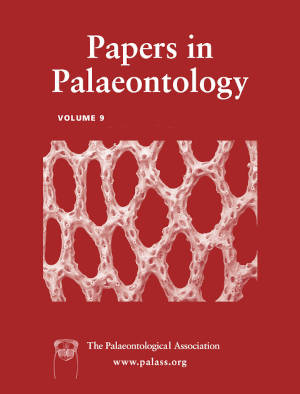Article: The last horned armadillos: phylogeny and decline of Peltephilidae (Xenarthra, Cingulata)
Publication: Papers in Palaeontology
Volume:
9
Part:
4
Publication Date:
2023
Article number:
e1514
Author(s):
Daniel Barasoain, Darin A. Croft, Alfredo E. Zurita, Victor H. Contreras, and Rodrigo L. Tomassini
DOI:
10.1002/spp2.1514
Abstract
Abstract Peltephilidae (Xenarthra, Cingulata) is an ancient lineage of medium–large-sized ‘armadillos’ from South America, characterized by chisel-shaped molariforms, a U-shaped dental arcade, and cephalic osteoderms modified into hornlike structures. Although the biochron of the group extends from the early Eocene to the Late Miocene, the most abundant and complete records come from the Early Miocene of Patagonia. Remains from the Late Miocene are very scarce, and the last records of the group are from the Chasicoan Stage (Tortonian). The only taxon known from this interval is Epipeltephilus kanti from the Arroyo Chasicó Formation (9.23 ± 0.09 Ma; Buenos Aires Province, Argentina), a species previously represented only by a few isolated osteoderms. Here we report new remains assigned to E. kanti from the Late Miocene of Loma de Las Tapias Formation (c. 9.0–7.8 Ma; San Juan Province, Argentina), including a hemimandible and several fixed and mobile osteoderms. These new specimens constitute the youngest record of Peltephilidae. The inclusion of E. kanti within Epipeltephilus and the monophyly of the genera Peltephilus and Epipeltephilus are corroborated for the first time through a cladistic analysis. The decline and eventual disappearance of this ‘armadillo’ group in the Late Miocene is chronologically coincident with the replacement of subtropical/tropical environments by more open and arid ones and with the proliferation of other large armadillos such as Vetelia, Macrochorobates, and Macroeuphractus.
